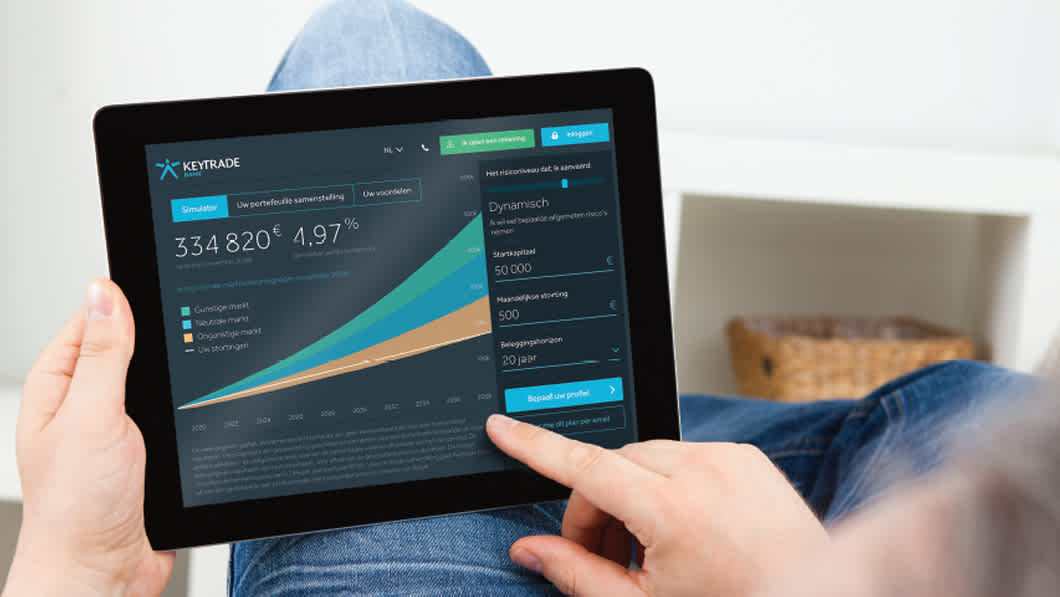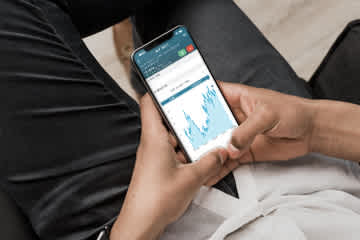8 years of Keyprivate: let's take stock

Geert Van Herck
Chief Strategist KEYPRIVATE
January 18, 2024
4 minutes to read
Objects in the rear view mirror may appear closer than they are ... but anyone who drives a car can confirm: to move forward safely, it is a good idea to look behind you every now and then.
A new era dawned for Keytrade Bank on 1 January 2016 with the launch of Keyprivate. Back then, we made discretionary asset management accessible to a very large group of savers. From as little a EUR 15,000, we enabled them to start investing in diversified investment portfolios that are fully suited to their risk profile. And we have never stopped doing so – quite the opposite, in fact.
Only for the rich? Not at all!
For many years, wealth management, private banking, etc. were indeed services to which many savers or investors had little or no access. You had to put a few hundred thousand euros (or even a few million) on the table to get the chance to even speak to a private banker.
In addition, from 2010 onwards Belgian savers had to contend with ultra-low interest rates on very popular savings accounts. To give investors and savers access to a diversified portfolio (diversification being the best way to spread risk), we at Keytrade Bank launched Keyprivate at the end of 2015: a portfolio where customers’ assets are spread across equities, bonds and commodities through trackers.
As it has been a good eight years since then, it is high time to draw up another interim status report.
What net returns has Keyprivate achieved?
Table 1 shows the net returns achieved annually for each of the 10 risk profiles. "Net" here means the amount after deducting the annual management fees (0.91% including VAT) and taxes (stock market taxes).
Over the years, we have achieved rather good results, although 2019 was an exception: we lagged behind our main competitors that year due to an overly defensive investment policy. An analysis of the funds' results for 2019 by De Tijd newspaper shows us that a neutrally invested fund achieved a return of around 12% in 2019. The figure for a dynamic fund was 17%.
Table 1: Annual Keyprivate net returns 01/01/2016 - 31/12/2023*
| empty-header | empty-header | empty-header | empty-header | empty-header | empty-header | empty-header | empty-header | empty-header | empty-header |
|---|---|---|---|---|---|---|---|---|---|
Keyprivate | risk level | 2016 | 2017 | 2018 | 2019 | 2020 | 2021 | 2022 | 2023 |
Very moderate | 3 | 2.37% | 2.24% | -6.65% | 4.90% | -1.90% | 10.29% | -10.10% | 7.38% |
Balanced | 5 | 4.63% | 4.64% | -4.84% | 5.02% | -1.92% | 12.37% | -10.20% | 9.36% |
Dynamic | 7 | 7.52% | 7.13% | -7.78% | 7.11% | -1.44% | 15.12% | -9.35% | 11.70% |
Very aggressive | 10 | 5.47% | 8.99% | -8.84% | 6.17% | 1.16% | 16.62% | -10.85% | 14.06% |
*Past performances are not a reliable indicator of future results.
Source: Keytrade Bank
Table 2 shows the average annual net return since 1 January 2016. An investor who invested EUR 15,000 in a balanced profile (profile 5) on 1 January 2016 would have seen the value of the portfolio increase to EUR 17,755 by 31 December 2023.
A dynamic investor who also invested EUR 15,000 – but in a dynamic profile (profile 7) –would have seen an increase to EUR 19,615 on 31 December 2023.
With these average annual net returns, we have kept our promise right from the start. “Those who invest in a diversified portfolio will achieve a better return than a savings account” – this is what we stated at the start.
Of course, many people will be thinking: “Well, doing better than 0.11% isn't that hard!”
They certainly have a point, but imagine that you knew in January 2016 that:
- a certain Donald Trump would become US president in 2016. Just to remind you, all the economists and stock market observers at the time said that Trump being elected would be the worst possible scenario for the stock market;
- a pandemic such as COVID would bring the global economy to a halt in 2020;
- a war would break out on European soil in 2022;
- the bond market in 2022 would experience the worst crash since the 1930s;
- central bankers in the United States and Europe would throw away their zero interest rate policy.
Now we ask you: As an investor, would you have opted to invest in Keyprivate if you knew this? Or would your emotions have steered you towards a savings account?
Only you can answer that. Above all, we want to say that a lot has happened in the last few years.
Table 2: Average annual net return on Keyprivate since 1 January 2016*
| CAGR (Compound annual growth rate) | since 01-01-2016 |
|---|---|
risk level 3 | 0.86% |
risk level 5 | 2.13% |
risk level 7 | 3.41% |
risk level 10 | 3.67% |
*Past performances are not a reliable indicator of future results.
Source: Keytrade Bank
Lessons learned from 2019
We said above that we took a far too defensive stance in 2019. As a result, we were lagging behind our competitors, which prompted us to review who we were and what our investment approach was within Keyprivate. Was our model agile enough in the event of a spectacular recovery in the stock market, more specifically in case of so-called "V-shaped" recoveries? The result was a new approach in 2021, one where we could react more quickly. Now, a few years later, we can safely say that this new approach is clearly paying off.
We can see this from Table 3, among other things. This shows the net returns achieved since January 2021. This was the point when we started with our new approach, and we are pleased to tell you that the net returns achieved over the past three yearsare among the best in the Belgian market.Bear in mind that Belgian pension funds, regardless of their profile, lost around 16% on average in 2022.
This is particularly important for people who are still hesitant about switching to a diversified investment portfolio. The accumulated backlog from 2019 has been caught up in recent years and we are planning to continue along the path we have taken. That's a given.
Table 3: Average annual net return on Keyprivate since 1 January 2021*
| CAGR (Compound annual growth rate) | since 01-01-2021 |
|---|---|
risk level 3 | 2.13% |
risk level 5 | 3.33% |
risk level 7 | 5.25% |
risk level 10 | 5.85% |
*Past performances are not a reliable indicator of future results.
Source: Keytrade Bank
Do these figures speak to you loudly and clearly enough?
If so, you should know that we have our own Keyprivate team at Keytrade Bank. Call our colleagues on +32 (0)2 679 91 11 (Monday to Friday, 9 am to 5 pm) or email keyprivate@keytradebank.comif you have any questions about Keyprivate.


